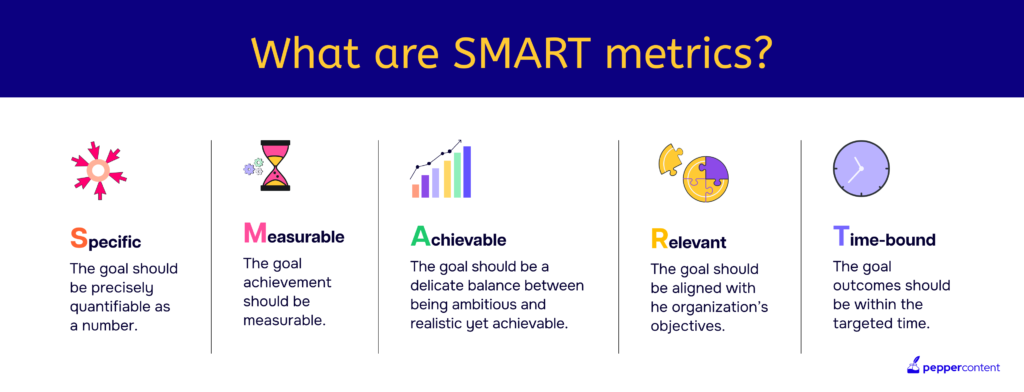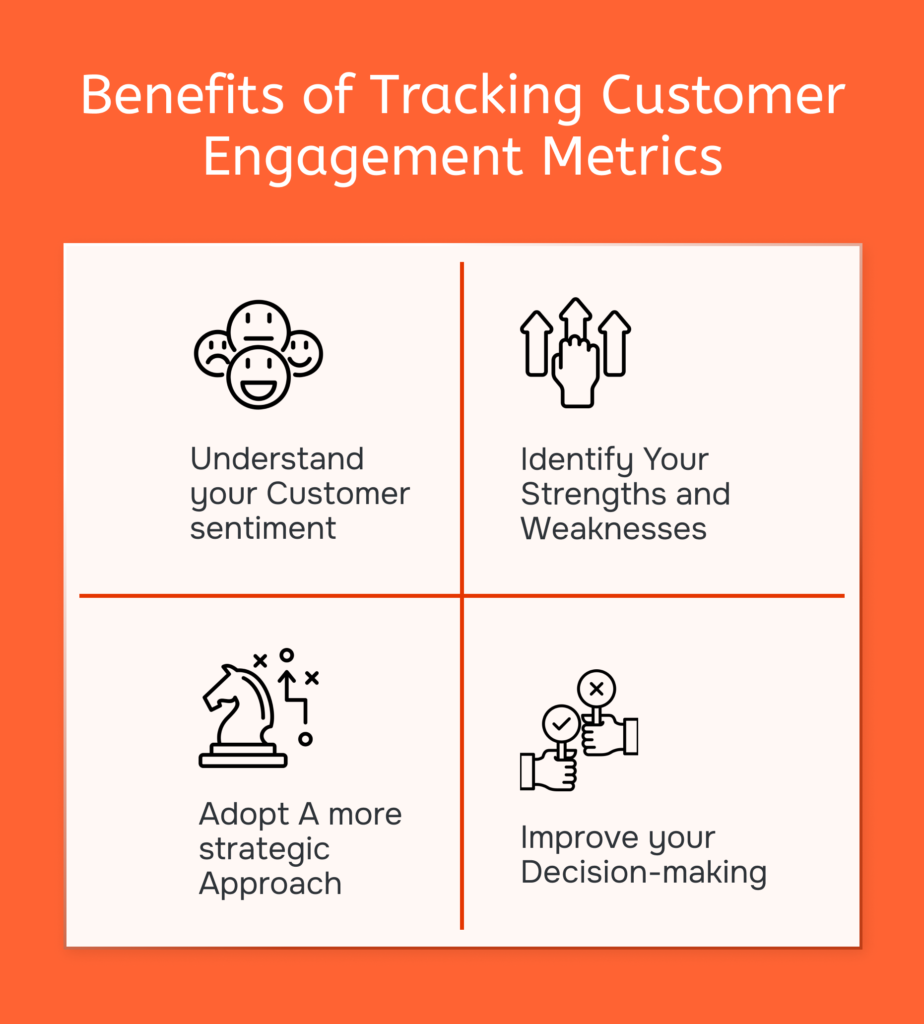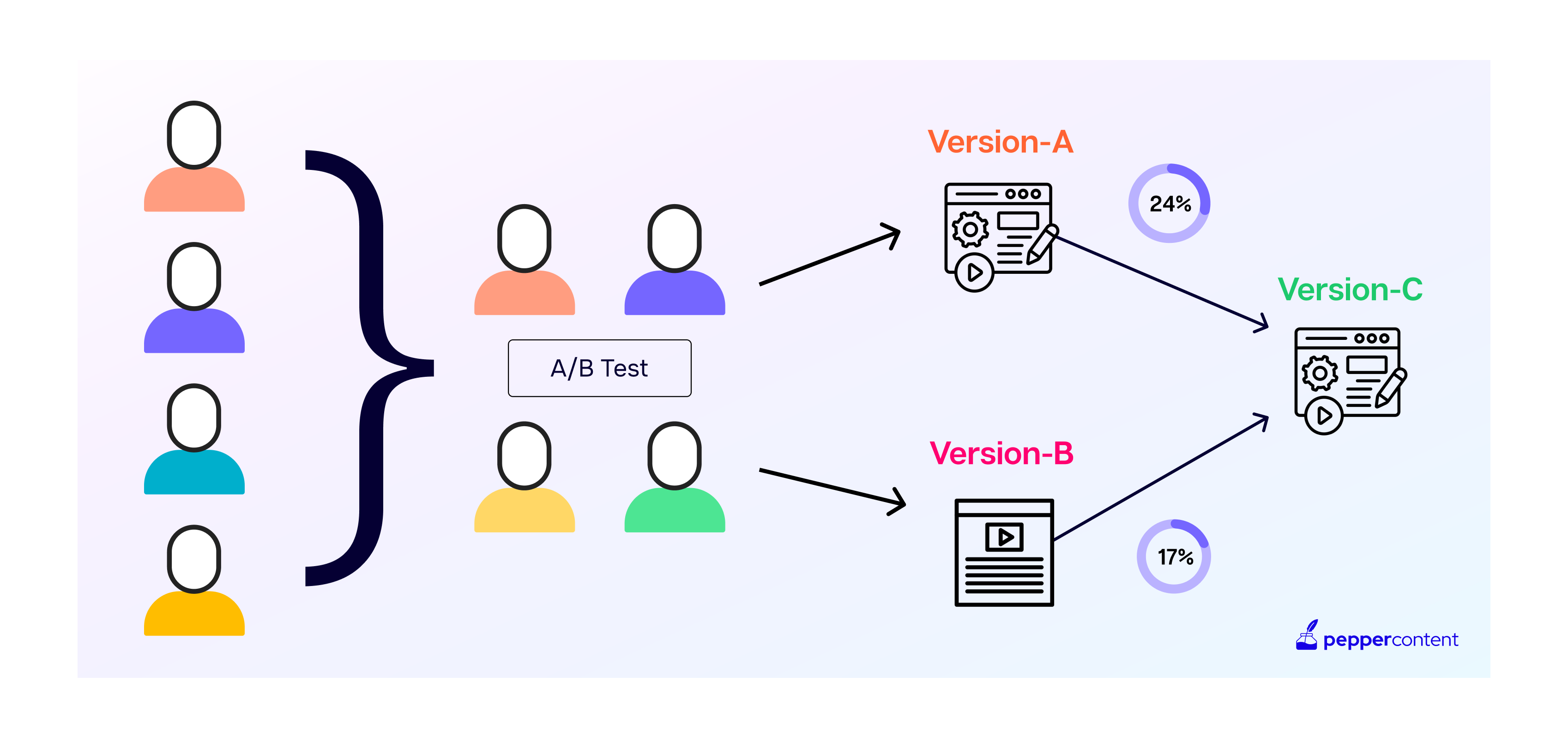Content Marketing Metrics: Unlocking Success in Content Performance

Tracking content performance is crucial for the success of any content marketing strategy. Without measuring the effectiveness of your content, it’s impossible to determine whether your efforts are yielding results or not. Content metrics provide valuable insights into audience behavior, engagement levels, and conversion rates. By understanding these metrics, you can optimize your campaigns and improve your overall performance.
This article will cover some of the most important content marketing metrics you should be tracking. Understanding how to set SMART goals, analyze traffic and engagement rates, and track conversion metrics is essential for any content marketer looking to unlock success in their campaigns. By leveraging the power of content performance metrics, you can ensure that your content is resonating with your target audience, driving engagement and conversions, and ultimately achieving your business objectives.
Setting SMART Goals with Content Metrics
As a content marketer, setting goals is essential for success. However, not just any goals will do. To achieve the best results, goals must be SMART: Specific, Measurable, Achievable, Relevant, and Time-bound.
To set SMART goals, you must first audit your existing content with the amazing advanced tool by Pepper Content and analyze the competition to determine benchmarks for goal-setting. Look at what your competitors are doing, what works and what doesn’t work. For instance, if your competitor’s website has a high traffic rate, then it’s important to analyze how they managed to achieve that level of success and try to replicate it.
Next, identify key metrics that you can use to set achievable targets. Metrics such as traffic or engagement rates help you measure success accurately. When creating goals, ensure they align with your overall business objectives.
For example, suppose your business objective is to increase sales by 30%. In that case, your content marketing goal could be to improve conversion rates by 20% in the next six months using targeted landing pages that drive more leads into the sales funnel.
Another example is setting a goal to increase website traffic by 50% over the next six months by publishing new blog posts twice a week consistently. This goal is specific and measurable; achieving it would be an achievement relevant to driving more leads into the sales funnel.

Setting SMART goals with content metrics is essential for any successful content marketing strategy. SMART stands for:
Specific: The goal should be specific and unambiguous. For example, instead of saying “Increase sales,” you could say “Increase sales by 10% in the next quarter.” This goal is specific because it specifies the amount of sales growth (10%) and the time frame (next quarter).
Measurable: The goal should be measurable so that you can track your progress and see how close you are to achieving it. For example, you could measure sales by the number of units sold, the total revenue generated, or the number of new customers acquired. In this case, you could measure sales by the number of units sold.
Achievable: The goal should be achievable, but still challenging. If it’s too easy, you won’t be motivated to achieve it. If it’s too difficult, you’ll be discouraged and give up. In this case, a 10% increase in sales is achievable for most businesses. However, it would be too difficult for a small business to achieve a 100% increase in sales.
Relevant: The goal should be relevant to your overall business goals and objectives. If it’s not relevant, you’re wasting your time and resources. In this case, increasing sales is relevant to the overall goal of increasing profits.
Time-bound: The goal should have a specific deadline. This will help you stay on track and make sure you’re making progress toward your goal. In this case, the goal is time-bound by the next quarter.
Identifying key metrics that align with overall business objectives and determining benchmarks by analyzing competitors’ performance data will allow you to set realistic and achievable targets. With these goals in place, you can work towards improving traffic rates, engagement rates, or conversion rates while ensuring business growth and success.
Traffic Metrics
When it comes to content marketing, traffic metrics are an essential way to measure success. These metrics provide insights into how many people are visiting your blog or website, how long they are staying, and how frequently they are returning. By analyzing these metrics, you can determine what types of content resonate most with your audience and optimize your content strategy accordingly.
To begin measuring traffic metrics, you’ll need to have a website analytics tool in place. Google Analytics is a popular and free option for tracking website traffic. Once you have this setup, you can start measuring key metrics such as page views, unique visitors, and bounce rates.
Page views represent the number of times a particular page on your website has been viewed by users. Unique visitors represent the number of individual people who have visited your site during a specific period; this metric helps you understand how many new visitors your site attracts. Bounce rates indicate the percentage of visitors who leave immediately after landing on the site; a high bounce rate typically means that users didn’t find what they were looking for.
Successful blogs and websites have leveraged traffic metrics to improve their performance. For example, the food blog Pinch of Yum used traffic metrics to identify its most popular recipes and then created more content around those recipes to drive even more traffic. Similarly, Buzzfeed’s data-driven approach has helped the company grow from a small blog to a media behemoth by analyzing traffic patterns and developing content based on what works best.
Engagement Metrics
When it comes to measuring the effectiveness of your content marketing strategy, engagement metrics are an essential component. Engagement metrics track how your audience interacts with your content, such as likes, shares, comments, and reactions. By analyzing these metrics, you can better understand how well your content is resonating with your target audience.
Likes are a common engagement metric that measures the number of times someone clicks the “like” button on your content. This metric is important because it can help gauge brand awareness and social proof. Higher numbers of likes suggest that people think highly of your content and are willing to publicly show their support for it.
Shares are another important engagement metric that measures how often someone shares your content with others on social media or through email. When someone shares your content, they are essentially endorsing it and recommending it to others in their network. This can help increase brand awareness and drive new traffic to your website.
Comments are yet another crucial engagement metric that measures how many times someone leaves a comment on your blog post or social media post. Comments indicate that people are actively engaging with your content and may have questions or opinions they’d like to share. Responding to these comments promptly can help build rapport with your audience and improve customer satisfaction.
For example, take GoPro’s social media campaign. The company encouraged its users to submit videos taken from their GoPro camera for a chance to be featured on their official Facebook page. This campaign was highly successful regarding engagement metrics since people were actively sharing and commenting on these user-generated videos.

Conversion Metrics
In content marketing, the ultimate goal is to turn readers into customers. This is where conversion metrics come in. By tracking metrics like click-through rates (CTR) and lead generation rates, you can measure the effectiveness of your campaign in terms of audience engagement.
CTR refers to the percentage of clicks on a link compared to the number of impressions for that link. It measures how well your call-to-action (CTA) is working and if it’s compelling enough to get readers to click through. CTR is a crucial metric in email campaigns, display ads, and social media.
Lead generation rates measure the conversion rate from web visitors to leads. This metric helps you understand how effective your content is at generating interest in your product or service and collecting contact information to nurture leads into customers.
One example of a brand that effectively uses conversion metrics is Airbnb, which used A/B testing to optimize its email campaigns and improve its CTR by 30%. By keeping an eye on conversion metrics, they were able to experiment with different CTAs and copy variations until they found the winning combination.
Analyzing Metrics for Improvement
Now that you’ve identified the key content performance metrics, it’s time to analyze them to understand what’s working and what’s not. Analyzing metrics can help identify which pieces of content are resonating with your audience, and which ones need improvement.
One approach is to conduct A/B testing to improve specific metrics such as click-through rates, engagement rates, or conversion rates. By creating two versions of a piece of content and testing them against each other, you can identify which version performs better and make changes accordingly.

It’s also important to regularly review your goals and benchmarks and adjust them as needed based on your performance. By constantly analyzing your metrics and making improvements, you can continue to optimize your content marketing strategy for maximum success.
Measuring content performance metrics is essential to any successful content marketing strategy. By setting SMART goals and monitoring traffic, engagement, and conversion metrics, marketers can gain valuable insights into the effectiveness of their campaigns. Through analyzing metrics and testing new approaches, brands can continuously improve and optimize their content strategies. Remember that tracking your content performance through key metrics is not only important for success but also helps you stay ahead of the competition. With a data-driven approach, you can create high-quality content that resonates with your audience and drives meaningful results for your business.
Latest Blogs
Learn how to rank on AI search engines like ChatGPT, Perplexity, and Gemini by optimizing your content for authority, structure, and relevance. Stay ahead in AI-driven search with this strategic guide.
Explore the best healthcare SEO services for your medical practice. Improve online visibility and effectively reach more patients in need of your services.
Discover top social media agencies specializing in banking solutions, enhancing financial services and driving engagement.
Get your hands on the latest news!
Similar Posts

Content Analytics
5 mins read
How to Check Google Rankings: 3 Swift and Accurate Methods

Content Analytics
9 mins read
How to Measure Content Marketing Effectiveness

Content Analytics
5 mins read